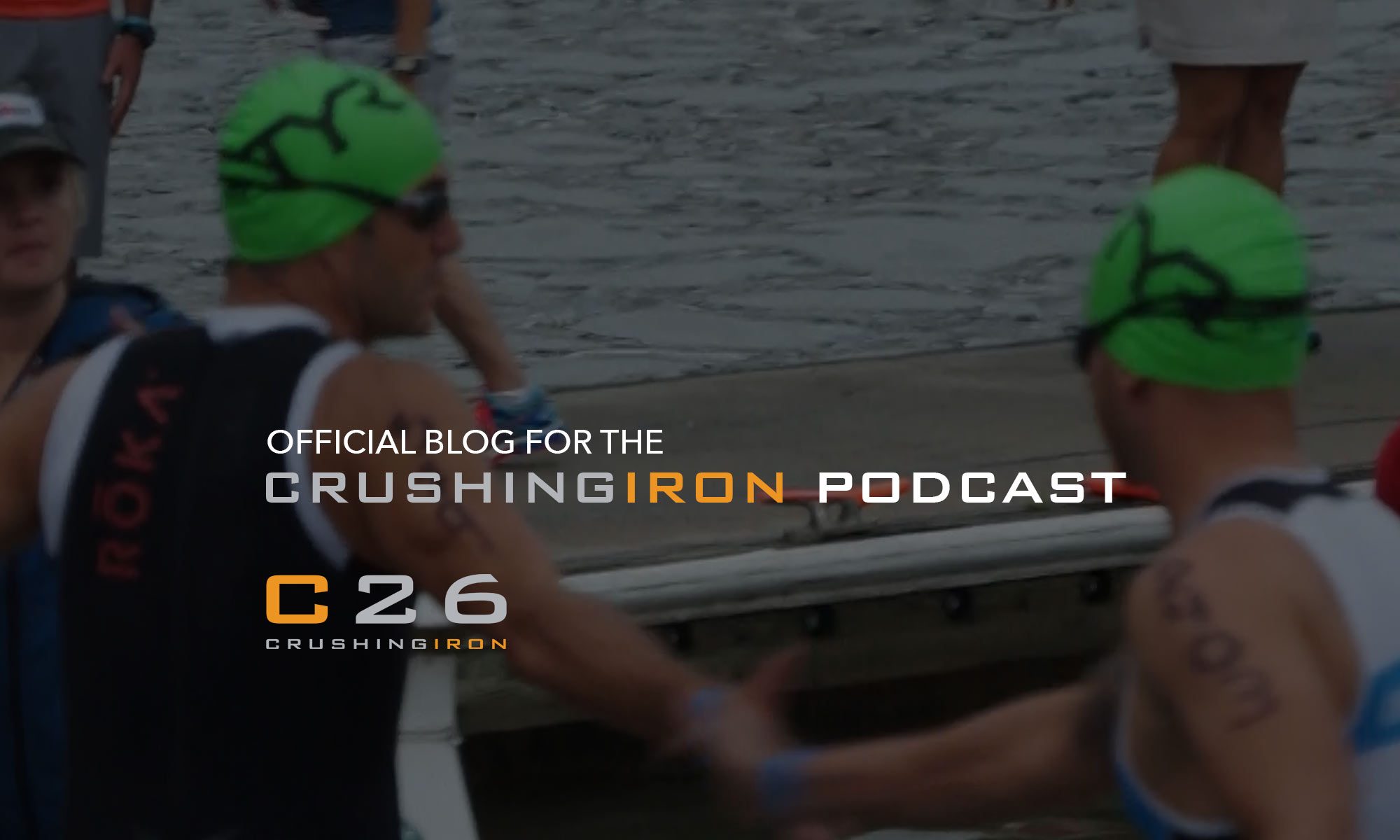By Mike Tarrolly for the Crushing Iron Triathlon Podcast
The Crushing Iron blog began the day I signed up for my first Ironman. At 49-years-old, I was just starting to run after years of neglecting my health. The blog was meant as a place for me to be honest and sort through the often confusing thoughts surrounding the direction of my life.
I wrote almost daily, and shared it with the world. I’m certain this consistency played a major role in completing 5 Ironman races over the next 5 years.
I was open, fearless, and sometimes even funny in my writing. It was a process that helped me understand the demands of Ironman training all while cleansing years of suppressed thought and questionable behavior.
But a while back, for some reason, I couldn’t write anymore. At least not with the same freedom.
I was focused on writing for others rather than myself –and most good writers will tell you that is a fatal flaw. So, I flailed in my head looking for a way out and somehow landed on meditation.
Mediation
The goal was fairly simple. Sit twice a day for twenty minutes. Don’t sweat the excessive thought, just sit and “practice” meditation. That’s exactly what I did, and it lasted . . . two weeks.
I’d always dabbled in meditation, but rarely at this level of intensity. The results were powerful, and frankly . . . a little frightening.
Meditation is meant to calm the mind and help find your true self amidst the clutter. But when you open energy pathways, buried thoughts begin to surface, and they’re not always pretty.
I liken it to a detox similar to giving up drugs or changing your diet. These can be painful stretches that scare the shit out of you and I’m convinced it’s why most people struggle to change their lives. Detoxification can be brutal, and often feels like you’re punishing your body and well-being.
But like getting into shape, the pain is temporary. Maybe two days or two months, but depending on how big the change, eventually the pain is replaced by a new level of pleasure. The key is to either have a high level understanding of this, or have someone around (a coach, mentor, etc) who can confirm that, despite the pain, you’re on the right path.
I didn’t have the support and as I went through this stretch of meditation alone, my world got very dark.
Mental Detox
I sensed a deep calm, but on the surface I felt lethargy and mild-depression. I was very tired and leaning more and more toward isolation.
I knew this was a good thing in the long run, but couldn’t talk myself out of the darkness. I even went online and discovered meditation detox symptoms like: Increased sensitivity to pain, irritability, restlessness, hot flashes, weakness, body aches, headaches, etc. I was looking right at these words while experiencing these feelings and I still couldn’t believe it.
So I stopped meditating.
Almost immediately, I felt more comfortable in my skin. I’d been climbing without a rope and finally reached the ground again. The problem is, when you’re climbing, the place where you started is backwards.
I’ve been contemplating that experience the last two weeks without meditation. At my core I knew I should keep going but was afraid. So, I turned to writing.
Writing has always helped me find, and maybe more importantly, remember what I know at a deep level. Writing forces me to articulate my thought and it’s usually way easier for me to write the truth than speak it to someone else. Keyboard therapy.
Training Struggles
It almost goes without saying, but the struggles I’ve faced the last few weeks have all but crushed my training. I’m quite sure there is nothing worse than getting on a trainer when you’re sore, tired, and un-motivated. I tried several times, but failed miserably with a few easy 20 minute rides. I couldn’t get it going.
I was listening to my body and my body was saying, “fuck your workouts.”
The last few days I’ve been writing again. Not with a purpose, but to clear the air. Pouring shit out with no agenda. And (not coincidentally) the last few days I’ve found myself back on the trainer or taking easy runs. Last night was my first hour-plus trainer ride in over two months. I took it very easy. I let my legs spin without resistance. And when I finished . . . it felt great.
So, as always, it comes back to consistency and patience. We’ve done that with our podcast and it has grown organically. We’ve recorded two podcasts a week. It felt attainable and right. We had no agenda other than to just do it.
A Slow Burn
I think mediating twice a day was too much in the beginning. Trying to convince myself that I need to workout twice a day right now is also too much. Or writing for 3 hours a day . . . all too much.
For me and change, the slow burn is always the way to avoid shock. Whether it’s mediation, writing, or workouts, I have to remember . . . more doesn’t always mean better.
There are nearly 1,000 posts on this blog and I didn’t write them all at once. Day by day, they slowly uncovered truths that kept me closer to my path. Writing was free, natural and fun. And of course, those are the most important parts on triathlon, too.
The Crushing Iron Podcast has 100 Five-Star reviews on iTunes and releases every Monday and Thursday. If you’re looking for coaching, a custom swim analysis or camps, please feel free to contact Coach Robbie: [email protected]
If you’re interested in receiving new blog posts, videos, podcasts, etc… please sign up for the C26 newsletter on the upper right portion of this page. Thanks for listening!









